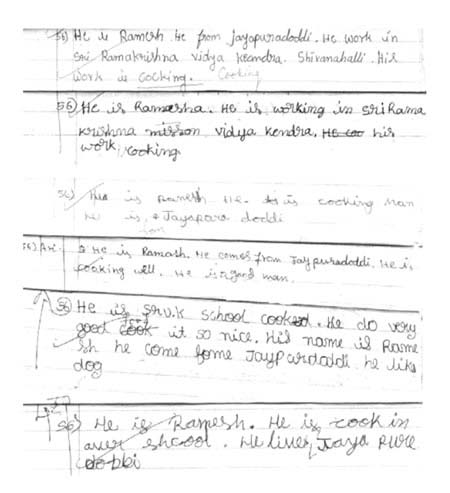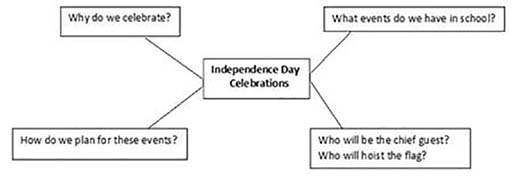1 Composition and transcription
Start by thinking about the two key processes of writing: composition and transcription, in an activity for you.
In any language, writing involves taking thoughts from inside the mind and putting them onto paper. There are two main aspects to writing:
- Composition: An authoring role that involves getting ideas, deciding on the form of the written text (a poem, a story, a report, a recipe, a set of instructions, etc.), thinking about who will read the writing and why. Drafting is an important part of composition. The first attempt at writing anything is seldom perfect.
- Transcription: A secretarial role that involves paying attention to how the writing is presented so that others can read and understand it. This includes aspects such as handwriting, spelling, punctuation and the general layout. In transcription, the writer can work from a final draft to a finished piece of writing.
When students begin to write, in English or any language, they can find it difficult to control both composition and transcription at the same time, and perform equally well in each of them. When students focus on getting ideas for a piece of writing, they may not spell the associated words correctly; when they focus on spelling words correctly, their ideas for a story or a poem may be less creative.
Pause for thought
|
In Case Study 1, a teacher focuses on composition and drafting.
Case Study 1: Mr Satyam encourages drafting
Mr Satyam teaches English to Class VI students at a school in a village outside Bangalore.
I drew an outline of a man on the board. I asked a few questions to get the students thinking, such as ‘Who is he?’ and ‘Where does he live?’ I prompted the students to ask more questions about the outline of the man. They came up with their own ideas such as ‘What work does he do?’ and ‘What does he like?’
They decided that the figure would be the school cook, Ramesh. I told the students to decide how to answer the questions. I wrote some of their suggestions around the figure, on the board.
Then I told them to write their own sentences in their notebooks [Figure 1]. From these drafts, students wrote portraits of Ramesh.

Pause for thought
|
Mr Satyam used a similar method to help students draft their ideas to write about Independence Day celebrations. He gave them a diagram and had them write sentences for each box (Figure 2).
Do you think you could use this diagram to start students writing on other topics?
Activity 1: Encouraging drafting – a planning activity
Taking the example of Mr Satyam in Case Study 1 as a guide, plan a drafting activity for your students.
The topic can come from your textbook, a topic in a subject such as science or history, or a real-life situation. You can give instructions verbally, or use a diagram similar to Figure 2 to help students draft sentences in English.
In drafting, the focus is on composition, not transcription. Tell your students that they should first concentrate on sequencing and structuring, and later they can work on spelling and presentation.
From their drafts, plan the next lesson where students will make improvements and finish their writing.
What you can learn in this unit

